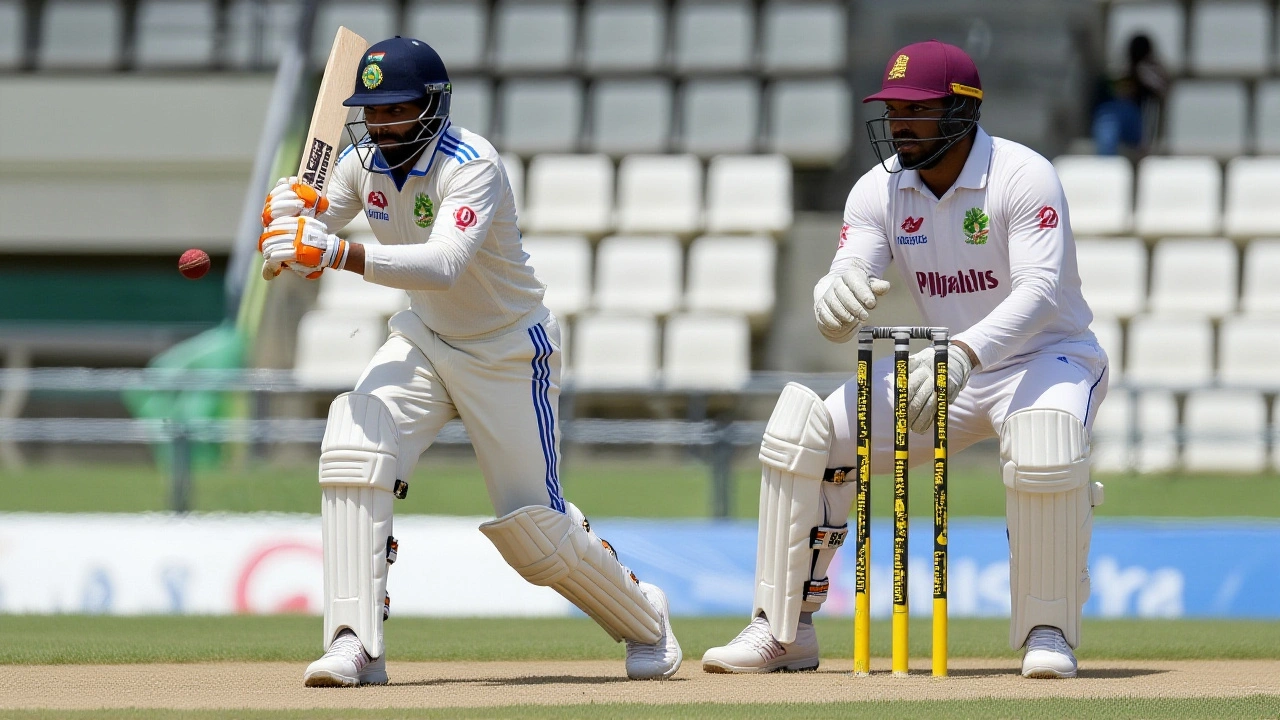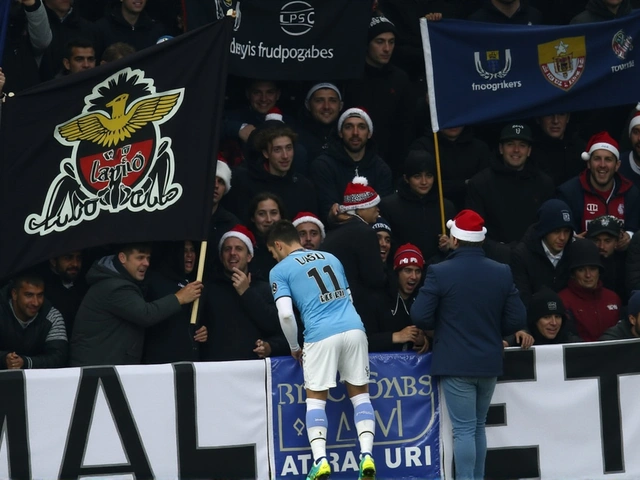When Shubman Gill lifted the captain’s armband for the first time on home soil, the cricketing world took notice. The BCCI had already set the stage for a two‑match Test series that would count toward the 2025‑2027 ICC World Test Championship, and the opening clash was slated for the massive Narendra Modi Stadium in Ahmedabad on 2 October 2025.
Background and schedule
The series, officially titled India vs West Indies Test Series 2025India, was announced in April 2025 as part of India’s packed 2025‑26 home season, which also features a South Africa tour later in the year.
The itinerary was simple: first Test – 2–6 October at the Ahmedabad venue; second Test – originally earmarked for Kolkata, then shifted in June to the Arun Jaitley Cricket Stadium in New Delhi, running 10–14 October. Both matches kicked off at 9:30 am IST.
Squads and captaincy changes
India’s 15‑man squad featured a blend of experience and youth. Besides captain Shubman Gill, vice‑captain Ravindra Jadeja oversaw a bowling attack anchored by Jasprit Bumrah, Mohammed Siraj and left‑arm wizard Kuldeep Yadav. The batting line‑up included KL Rahul, Yashasvi Jaiswal and all‑rounder Washington Sundar.
West Indies travelled under the leadership of Roston Chase, with Jomel Warrican as his deputy. Their original 15‑man list boasted the fast‑bowling trio of Alzarri Joseph, Shamar Joseph and Jayden Seales. Injuries forced two last‑minute swaps: on 26 September Shamar Joseph was replaced by Johann Layne, and three days later Alzarri Joseph’s back problem saw Jediah Blades enter the squad.
First Test: Ahmedabad showdown
The toss was won by the West Indies, who elected to bat. By lunch on day one the scoreboard read a startling 162/9 – a collapse that left spectators gasping. India’s pacemen answered with fury. Mohammed Siraj ripped through the lineup, finishing with figures of 4/40, while Jasprit Bumrah added 3/42. Kuldeep Yadav and Washington Sundar claimed the remaining wickets, finishing 1/25 and 1/7 respectively.
Compounding the drama, the match marked a historic footnote: it was the first home Test in 15 years without the ever‑present trio of Virat Kohli, Rohit Sharma and Ravichandran Ashwin in the playing XI. Their absence was felt, but the young core stepped up, sparking conversations about a generational shift.
Venue controversy: Why the emptiness mattered
Even before the first ball was bowled, murmurs rose about the choice of Narendra Modi Stadium. With a capacity exceeding 110,000, the ground loomed large – and so did the empty seats. Social‑media chatter on X (formerly Twitter) featured a fan who wrote, “If we’re playing a lower‑tier side, we should host it in a venue that fans actually want to watch Test cricket. Ahmedabad is built for marquee T20 spectacles, not for a two‑match series against a developing side.”
Critics argued that the BCCI’s decision ignored both atmosphere and logistics. They suggested a rotation among traditional Test hubs – Chennai, Kolkata, Bengaluru, Mumbai, Pune, Nagpur, Delhi, Dharamsala and Vizag – would preserve the intimacy of five‑day cricket while boosting tourism. The BCCI, however, defended the move, stating the stadium’s world‑class facilities and the city’s connectivity would benefit overseas broadcasters and sponsors.
Broadcast reach and fan engagement
For the growing audience in the United States, Willow TV secured live rights, streaming both Tests via its app and cable channel. The viewership numbers, still being compiled, are expected to surpass last year’s West Indies tour of South Africa, reflecting the increasing appetite for Test cricket in North America.
Domestically, the BCCI’s official website offered ball‑by‑ball commentary, interactive graphics and a live‑score widget that attracted over 1.2 million unique visitors across the two matches. The digital engagement spike demonstrates how even a contested venue can generate buzz when paired with robust online coverage.
Future implications for Indian cricket
Beyond the immediate results – India took a 1‑0 lead after the first Test – the series serves as a litmus test for the BCCI’s venue‑selection strategy. If the Delhi Test draws a fuller house, the board may consider a hybrid model: marquee matches in mega‑stadiums for global audiences, but smaller, heritage grounds for opponents perceived as less commercially potent.
Analysts also see the series as a proving ground for Gill’s leadership. Former India coach Ravi Shastri praised the captain’s calm demeanor, noting, “Shubman has shown poise beyond his years; his tactical decisions in the field will define the next decade of Indian Test cricket.”
Meanwhile, the West Indies will regroup, focusing on rebuilding their pace attack after the injuries to Joseph and Shamar Joseph. Their next assignment – a home series against New Zealand in early 2026 – could dictate whether they remain competitive in the Championship.
Frequently Asked Questions
How does the venue controversy affect future Test scheduling in India?
The uproar over the near‑empty Narendra Modi Stadium has prompted the BCCI to reconsider a one‑size‑fits‑all approach. Experts suggest a mixed schedule that alternates between mega‑stadiums for high‑profile series and traditional, smaller venues for developing opponents, aiming to preserve atmosphere while maximizing revenue.
What impact did Shubman Gill’s captaincy have on the team’s performance?
Gill’s calm, data‑driven approach was evident in field placements and bowling changes. Players cited his confidence‑boosting talks during breaks, and early results – a 1‑0 lead – indicate his style may suit a younger squad transitioning away from veterans like Kohli and Sharma.
Why were Alzarri Joseph and Shamar Joseph replaced before the series?
Alzarri Joseph suffered a back injury on 29 September, ruling him out of the tour. Shamar Joseph sustained a hamstring strain on 26 September. Their replacements – Jediah Blades and Johann Layne – were called up from the West Indies A squad, maintaining squad depth but altering the pace attack’s experience.
How did the series fit into the ICC World Test Championship?
Both Tests contributed points toward the 2025‑2027 WTC cycle. India’s win in the first match gave them an early advantage, while the second Test in Delhi will decide the series split and could shift the rankings for both nations as they vie for a place in the 2029 final.
What was the viewership response in the United States?
Willow TV reported a 15 % increase in streaming hours compared with the previous West Indies tour, indicating growing American interest. The series benefitted from prime‑time slots on the East Coast, and social media engagement peaked during Siraj’s four‑wicket spell.






